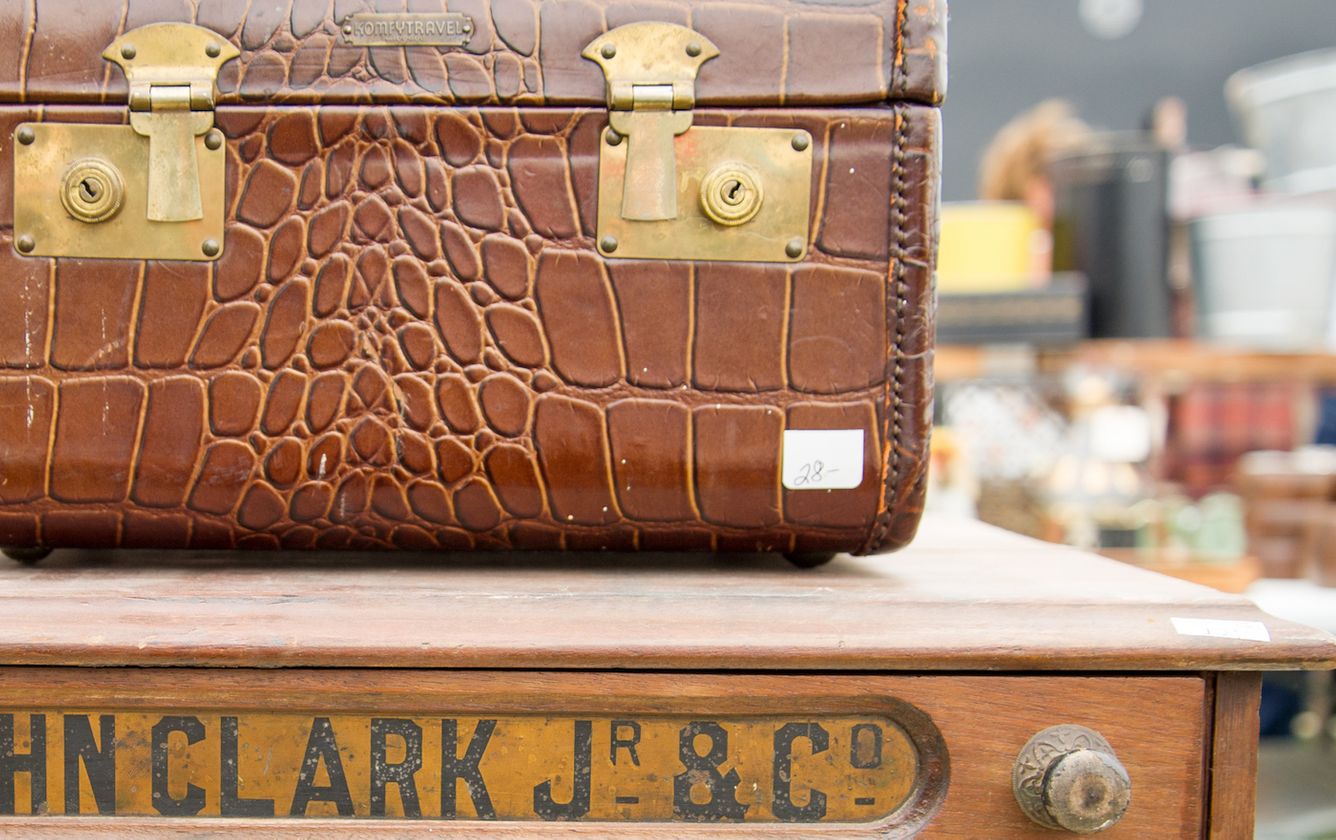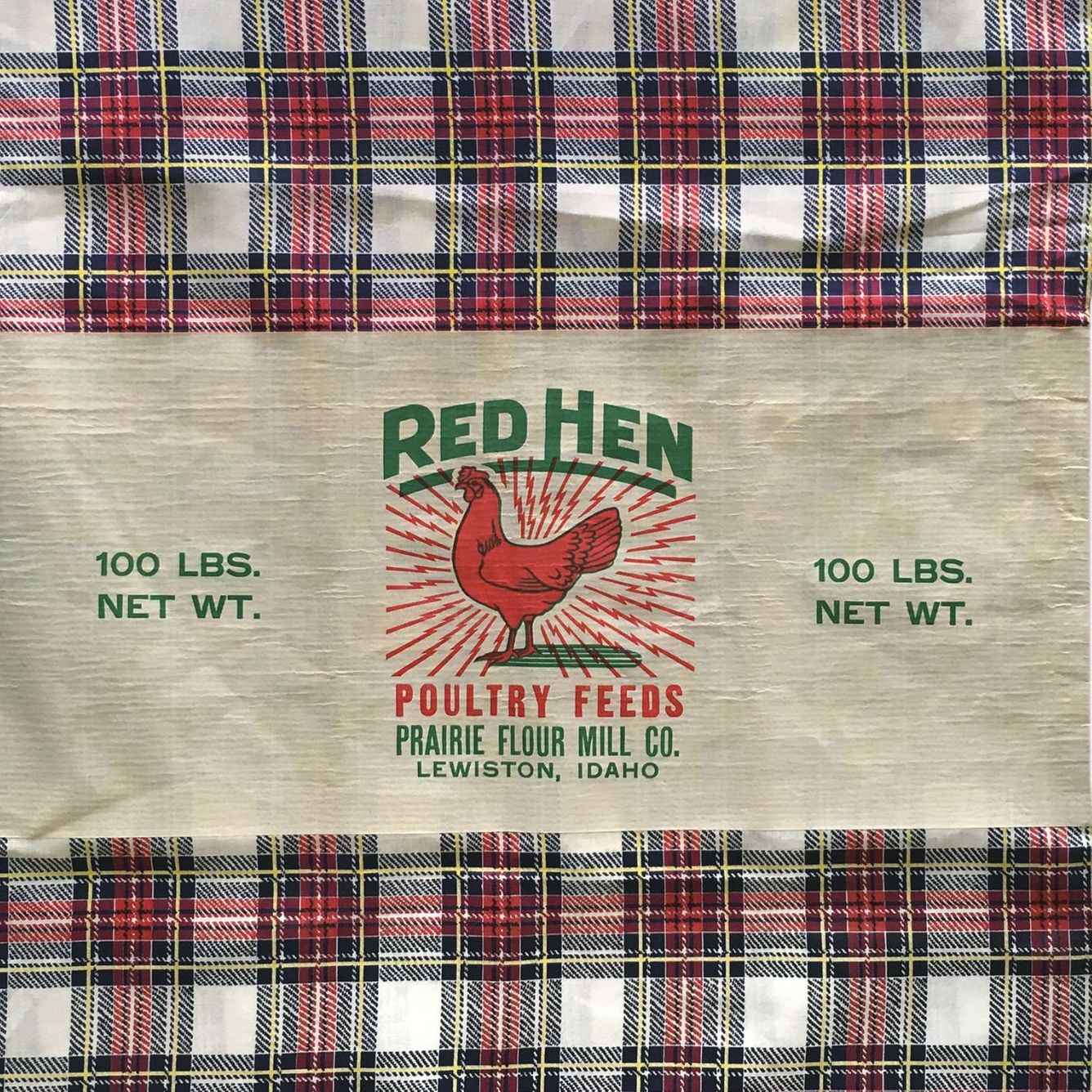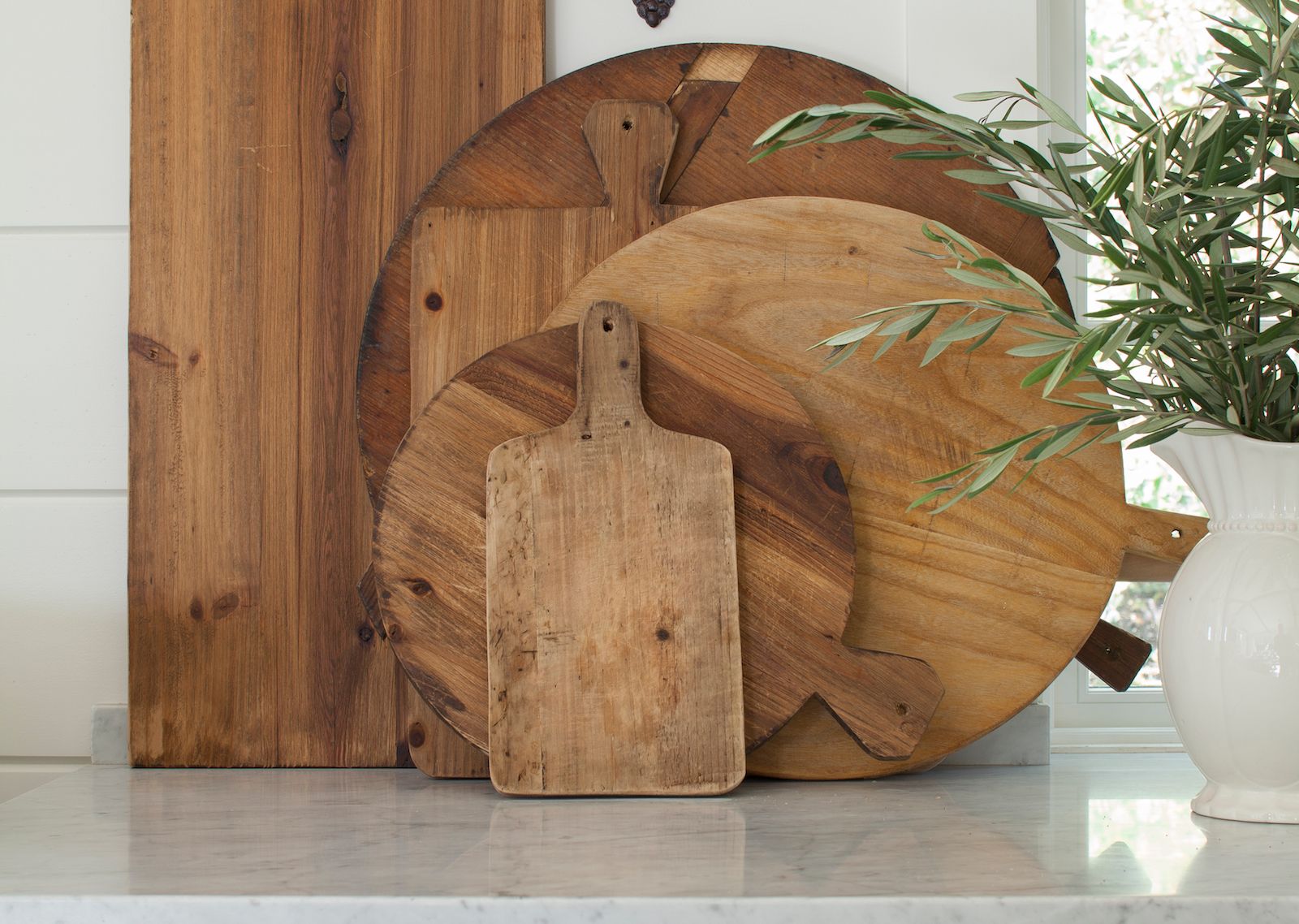
The Beauty of Breadboards
Vintage breadboards are having a moment. Here's why collectors love them, and tips for caring for them.
Vintage European breadboards are wildly popular these days. And with good reason: They're beautiful, add warmth and are full of patina. And, oh yeah, you can use them as cutting boards—at least to a point, says Shelli Adams, who runs Chasing Vintage online marketplace with her daughter Jacqueline Diekhoff. We chatted with Shelli, a pro when it comes to sourcing vintage breadboards (as well as other kitchen items and one-of-a-kind home decor).
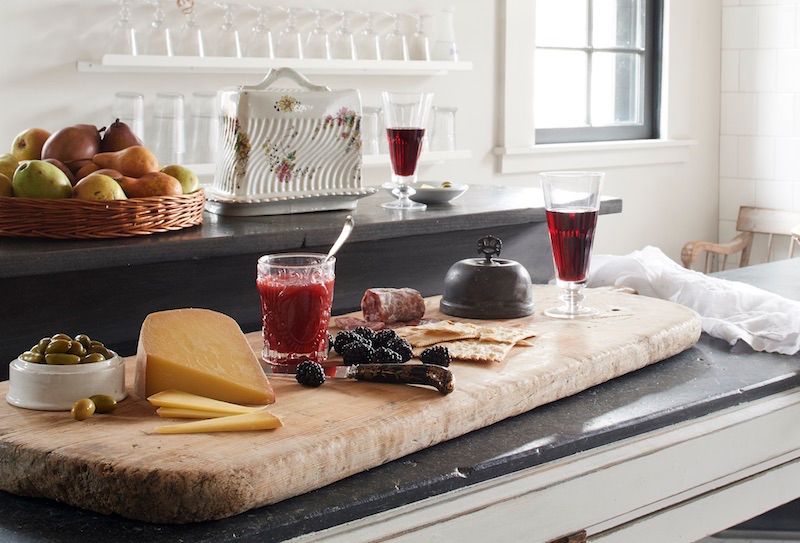
Q: First off, what's the backstory? What were European breadboards used for originally?
Shelli: They were used for kneading bread, shuffling breads in and out of ovens and displaying bakery goods at bistros and patisseries. The intent wasn't to be used as a daily cutting board or chopping block, although many we clean and preserve have the original knife markings from their past life in bistros.
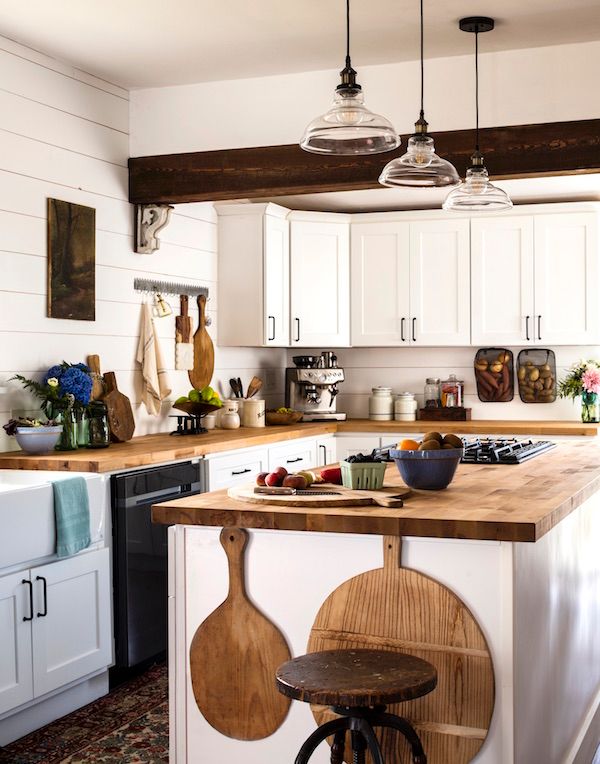
Q: Vintage breadboards are so trendy. But how do you know if a board is truly vintage?
Shelli: The easiest way to tell a vintage breadboard from a newer one is to look at the size, coloring and cost. Vintage breadboards aren't uniform in size or patina, and will cost slightly more.
A true French vintage breadboard is rarely thicker than an inch, has two handmade support straps to prevent warping, will be round or rectangular in shape and is usually pine, oak or alder. The handle is hand-carved, often with an intricate design. Many boards have hand-carved initials of the chef who used it daily or of the bride and groom who the board was made for. An original hang hole is another clue that the board is old.
An authentic vintage Turkish chopping board is always at least two inches thick, rectangular in shape and made from a darker wood such as walnut. Often the handle is primitive and thick. Turkish boards don't have support straps, though sometimes there are metal strips that have been used for repair purposes. A collector’s dream!
Q: What about new breadboards? What's happening in that market?
Shelli: There are currently some beautiful breadboards available on the market that use vintage and reclaimed wood. We offer several sizes created from vintage wood platters used to dry cheese in Europe. They have staining from the cheese rinds and knife markings from tasting. These boards are uniform in shape and have a lower price point than vintage breadboards.
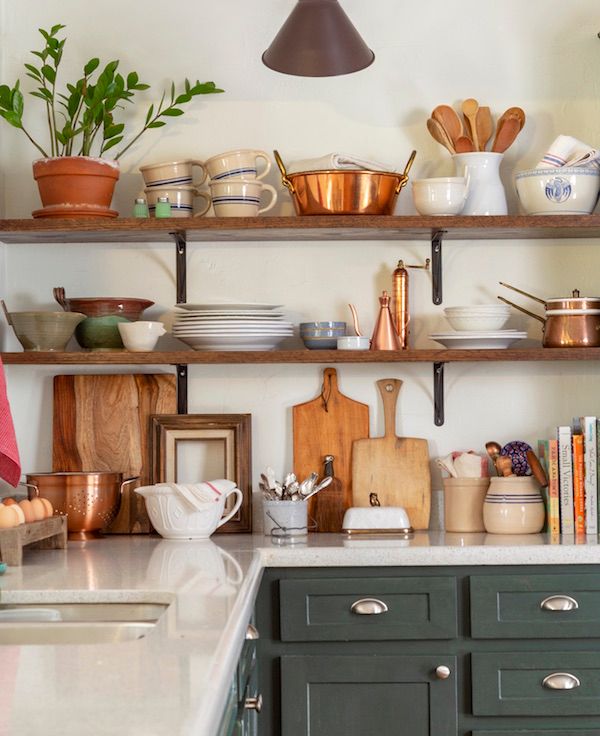
Q: What's the best way to clean and maintain a breadboard?
Shelli: First, we recommend that you don't use them daily as cutting boards, never cut raw meat on them and don't submerge them in water for long periods of time. The very best way to clean a vintage breadboard—or any cutting board or block—is to wash with warm water and cutting board cleaner. Scrub until you get a clean surface, rinse and wipe with a dry cloth. Once dry, wipe the board again with a food-safe butcher-block conditioner, which we recommend using quarterly on all breadboards and cutting boards, vintage or not.
Q: Any tips for using breadboards as display pieces?
Shelli: Vintage bread boards are beautiful resting upright behind a stovetop, gathered in a grouping together for your mantel or laid flat as a centerpiece on your table with candles and vintage jars filled with flowers. Their decorative uses are endless.
*As an Amazon Associate, I earn from qualifying purchases.
WORDS Liz Carleton
RESOURCES Find out more about the goods Shelli and Jacqueline sell at chasingvintage.com. See their full line of breadboards on their Etsy store. You can also find them on Instagram: @chasingvintage.
HOME PAGE

